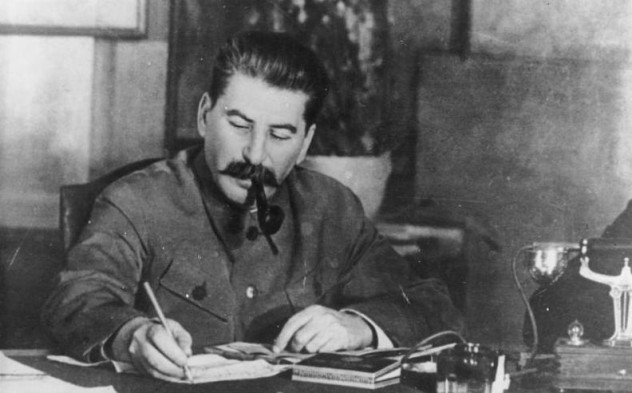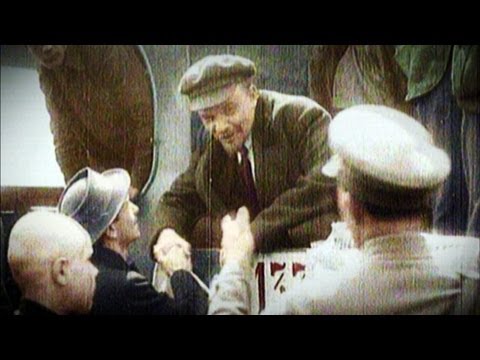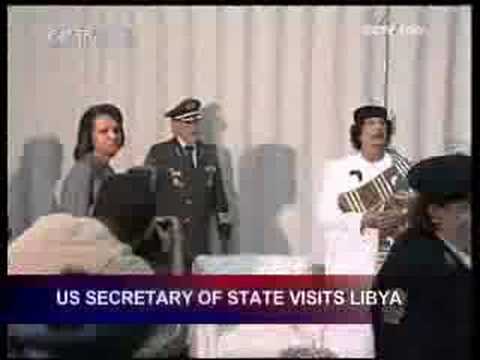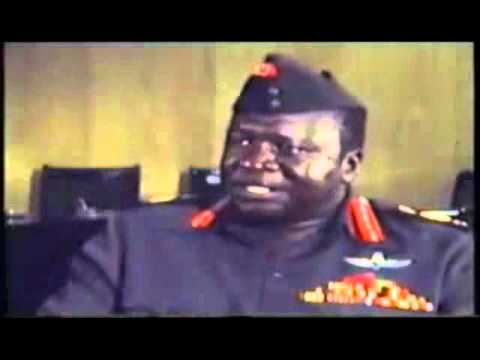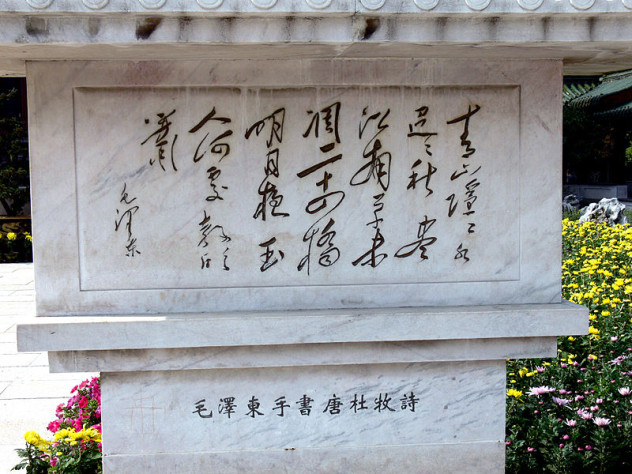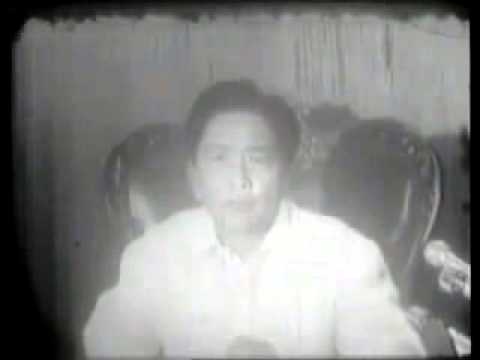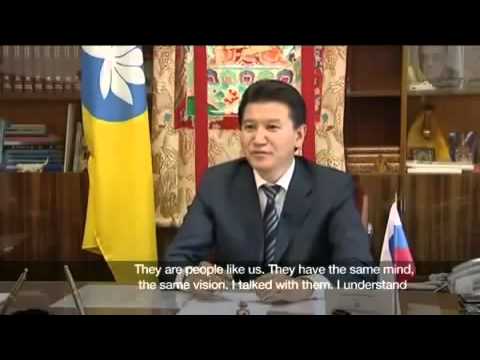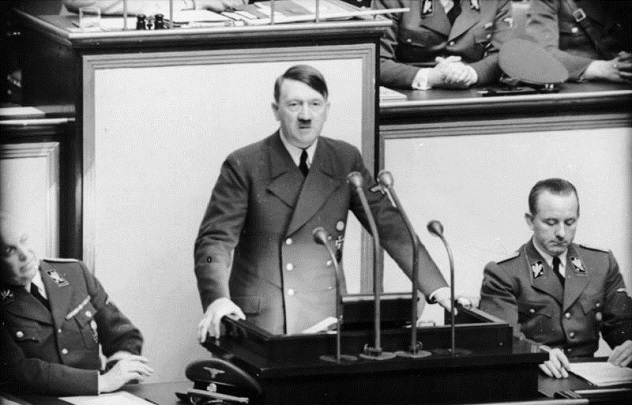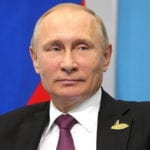10 Joseph StalinLeaving Crude Notes On Nude Male Drawings
Stalin had a bizarre habit of leaving crude notes written in blue or red pen on reproductions of male nudes sketched by 19th-century Russian painters. He occasionally defaced the pictures themselves but usually stuck to leaving comments in the margins. Some of the notes were political in nature, aimed at comrades living and dead. Next to a 19th-century male nude drawn by artist Vasily Surikov, Stalin left a note for Bolshevik activist Karl Radek, whom he had quarreled with and later executed: “Radek, you ginger bastard, if you hadn’t pissed into the wind, if you hadn’t been so bad, you’d still be alive.” On a sketch of a bearded naked man, Stalin drew an inverted triangle over the man’s penis and then wrote, “Why are you so thin? Study Marxism!” Analysts have suggested that this shows Stalin was a latent homosexual and/or homophobe, and the message was likely left for Mikhail Kalinin, a marginalized Bolshevik apparatchik. Others were more generally crude, such as one next to an image of a man reaching for his genitals: “You need to work, not wank. Time for reeducation.” On another, next to an image of a man standing in front of a prostrate woman, Stalin scribbled, “Idiot!!! You’ve completely forgotten what to do.” A picture of a young man holding a stick earned a rare positive comment from Stalin: “This Soviet David is preparing to tackle global imperialism. We will help!” The notes were signed by “J. Stalin” and are believed to have been kept secret by his bodyguards until they were sold to a private collector after the collapse of the USSR.
9 Vladimir LeninSecrecy
The early Soviet obsession with secrecy can be traced to the personality of Vladimir Lenin himself, who believed it was of paramount importance for the success of the revolution. He argued in his pamphlet What Is To Be Done? that secrecy would build comradely bonds between the party and workers. However, democracy “in Party organization, amidst the gloom of autocracy and the domination of the gendarmerie, is nothing more than a useless and harmful toy.” This was his conspiratorial view of the world, and it soon permeated through the entire Soviet apparatus in the 1920s. Most government business was done secretly, only made public when deemed prudent, a practice Lenin insisted upon. This practice allowed the Soviet elite to publicly wage a “war on the palaces” while secretly owning luxurious country houses, sanatoria, supply sources, and medical facilities. In a note to Stalin in 1918, Lenin wrote that they should build “one or two model rest homes no nearer Moscow than 400 miles. We’ll spend gold on this. [ . . . ] The rest homes will only be model ones if we can show that they have the best doctors and administrators, not the usual Soviet bunglers and oafs. [ . . . ] We must organize the repair of the railway branch-line by the autumn and the regular running of the self-driven trolley. Then we’ll have a rapid and secret connection the year round.” Lenin helped to create the justification for building isolated dachas and secret connection routes for the party elite, a habit which would help lay the foundation of the Soviet red aristocracy.
8 Muammar GadhafiCondoleezza Rice
The former Libyan dictator apparently had a really big crush on former US Secretary of State Condoleezza Rice. In 2007, he was singing her praises for Al Jazeera: “I support my darling black African woman. I admire and am very proud of the way she leans back and gives orders to the Arab leaders. [ . . . ] Yes, Leezza, Leezza, Leezza . . . I love her very much.” When she visited the dictator in 2008, he greeted her by placing a hand over his heart, a Libyan greeting reserved for women. He showered her with gifts, including a locket, a lute, an enormous ring, wristbands, and an autographed copy of his book. She gave him a seal of the United States inscribed with her signature, which he said was beautiful. During the visit, he sat her down to watch a video collage of photographs of herself, to music he had commissioned just for her. She wrote: “At the end of dinner, Gadhafi told me that he’d made a videotape for me. Uh oh, I thought, what is this going to be? It was a quite innocent collection of photos of me with world leaders—President Bush, Vladimir Putin, Hu Jintao, and so on—set to the music of a song called ‘Black Flower in the White House,’ written for me by a Libyan composer. It was weird, but at least it wasn’t raunchy.” The State Department would refer to Gadhafi’s crush as “deeply bizarre and deeply creepy.” Four years later, when Libyan rebels ransacked Muammar Gadhafi’s Tripoli compound, they discovered a relic of the infatuation. It was a photo album filled with pictures of Condoleezza Rice wearing different outfits at different occasions—considerably creepy, even for a guy with a golden couch shaped like a mermaid with his daughter’s face.
7 Idi AminScotland
The Ugandan dictator Idi Amin developed a strange obsession with England’s northern neighbor while serving in the King’s African Rifles, where he had Scottish commanding officers. When he came to absolute power over the country, he still sought to maintain a connection to the glory of the British empire, and he did so through disdain of the British and admiration of the Scottish. “If you go to Scotland, you will talk to the people. They will welcome you to their house. With the English, if they see a black man they see [sic] he is monkey or dog.” Author of the novel The Last King of Scotland Giles Foden claimed, “By attaching himself to Scotland—and in particular the idea of an independent Scotland—he was able to keep a connection to the colonial power.” In 1974, he offered to be the new king of Scotland, and there is 1976 footage of an African-American band marching the streets of Uganda wearing full kilt regalia and playing drums and bagpipes. However, things turned nasty when Amin was banned from a Commonwealth event at Gleneagles in 1977. After radio stations in Uganda announced his intentions to enter the UK by force, the army was stationed at Glasgow and Edinburgh airports in case the deranged dictator appeared with “at least 250 of his very formidable bodyguard.”
6 Fidel CastroDairy
Former dictator of Cuba and baseball player Fidel Castro has long been known for his odd obsession with cows, milk, and other dairy products. He is said to have preferred milk over water, which is unusual in a Hispanic country. He is said to have been able to recognize by sight all the cows he owned. Once, he left the Cuban Minister of Communications Enrique Oltuski in charge of his cows. Otuski moved some of the cattle to a different location, but Castro immediately noticed they were missing on an inspection. He wrote an angry note: “Enrique, you think that you have the biggest balls in this country; but you don’t. There is someone with even bigger balls.” Castro forced his love of milk onto the Cuban people, where it had previously almost all been processed into cheese, butter, or condensed milk. In the 1960s, he bought machinery from Holland and Sweden to produce high-quality yogurt, cheese, and ice cream. He also built one of the largest ice cream parlors in the world in Havana and called it Coppelia’s. The parlor had four indoor salons, four outdoor cafes, and one outdoor bar, operated from 10:45 AM to 1:45 AM every day. The establishment could serve up to 16,000 liters (4,250 gal) of ice cream to 35,000 patrons. Castro also spent millions attempting to genetically engineer a hybrid of the zebu, a bovine breed that flourishes in the heat, and the Holstein, the highest producer of milk. The results were surprising. His experiments yielded a great bull named Rosafe, who became an unexpected national icon, as well as a cow called Ubre Blanca (“White Udders”) with a high milk output. Ubre Blanca produced 110 liters (30 gal) of milk in a single day in 1982. This output was chemically induced, however, and she died young. The nation went into mourning. Castro ordered songs and poems composed in her name, and she was given a full military funeral and later exhumed to be displayed at the Museum of the Revolution. In 1987, Castro expressed hopes to engineer a mini cow that could be kept in apartments for a handy milk supply. One man dared to question Castro’s dairy obsession. In 1964, French agronomist and diplomat Andre Voisin visited Cuba and was compelled to try a “Cuban Camembert.” He pronounced it “not too bad,” but Castro pressed him further, and he said it was “like the French.” But when Castro tried to get him to say it was better than the French, Voisin couldn’t let that slide. “Better? Never!” he exclaimed, pulling a cigar from Castro’s pocket. “Will you agree that there is a better cigar in the world than this? You can’t beat tradition. My cheese and your cigars have centuries of experience behind them.” Castro was purportedly pacified by this, and you have to respect anyone who gets into a dictator’s face over cheese.
5 Mobutu Sese SekoOpulence
Dictator Mobutu Sese Seko of Zaire (now the Congo) was obsessed with the high life, spending millions while the majority of his population lived in crushing poverty. While the country had large reserves of copper, cobalt, and diamonds, Mobutu embezzled around 6.3 billion pounds, an amount equaling the national debt. After seizing power in a CIA-backed coup, his status as a bulwark against the spread of communism in Africa made the United States ignore his plundering of the country’s wealth and resources. Much of his wealth was concentrated overseas. He owned a chateau in Belgium, houses in Brussels, Venice, Paris, and Abidjan, and a castle in Spain. He also had a wine cellar with over 2,500 vintage wines at the Villa del Mare on the Cote d’Azur. His children were taken to school by helicopter, and he built a massive international airport to accommodate flights (often aboard a rented Concorde) to Europe and elsewhere for massive shopping sprees, during which he and his massive entourage would spend up to $1 million per week. After a 1994 shopping trip to Hong Kong, they were lauded for their large tips and given police protection to prevent any interruptions. Perhaps the greatest testament to his love of opulence was what he did to his hometown of Gbadolite, often referred to as an “African Versailles.” He built multiple palaces, which he filled with fake Louis XIV furniture, and even built a palace based on a Chinese design in the 1990s. A village of mud huts with 1,500 people became a Las Vegas–style glamor hub with hotels, banks, and casinos with 35,000 residents. In 1988, the New York Times described it: “At a marble-tiled terrace, voices rose from banquet tables set against a backdrop of illuminated fountains. Liveried waiters served roast quail on Limoges china and poured Loire Valley wines, properly chilled against the equatorial heat. ‘Bon appetit,’ said the 58-year-old president.” The city was in the middle of the jungle, and the Zairean army kept out interlopers. When the dictator fell from power, Gbadolite was looted and is now in ruin.
4 Mao Tse-tungCalligraphy
Calligraphy has a long and storied history in China, and Mao Tse-tung was one of the most prominent practitioners who sought to use the ancient art for modern political propaganda. Even though the Cultural Revolution aimed to eradicate unworthy traditions of the past, the popular style of calligraphy was based on the works from the Tang dynasty, though now with revolutionary messages. New styles were also developed, and it was perhaps the most innovative period for Chinese calligraphy in the 20th century. Mao had always been a calligraphy enthusiast, which tied in nicely with his love for poetry. As a student, he would often correspond with friends and colleagues in verse, and during the tumultuous political struggles of the early 20th century, political documents were produced by ink and brush rather than by typewriter. Propaganda images of Mao often portrayed him with a calligrapher’s brush in his hand. Calligraphy helped the communist elite to claim political and moral legitimacy, and Mao’s work was considered some of the best. His distinctive style was used in places as lofty as the masthead of the People’s Daily newspaper and the signage of the Beijing Railway Station—and as humble as mosquito nets at the Fujian Normal University. As Red Guards destroyed traditional works of calligraphy, Mao’s own works became iconic and his style was used on the armbands of the Red Guards themselves. According to author Chang Tsong-zung, “Mao made full use of his image as a traditional literati scholar, emphasizing his poetry and calligraphy and lending authority and historical legitimacy to his role as a sagacious ruler.” Despite his fall from grace, Mao’s calligraphy is still given respect in modern China. In 1999, a Chinese calligraphy magazine chose Mao as the seventh most important calligrapher of the 20th century, and his distinctive style still appears on consumer products like cigarettes and cars. In 2007, a TrueType-enabled typeface of Mao’s calligraphy for use online was released. The legacy hasn’t been too great for Mao Tse-tung’s grandson Mao Xinyu, however, as his own terrible handwriting has been widely lampooned on the Chinese Internet.
3 Ferdinand MarcosThe Number Seven
Dictator Ferdinand Marcos of the Philippines was somewhat obsessed with numerology, most particularly with his lucky number—seven. In fact, when he declared martial law and became a dictator in 1972, he was eager to make sure the numbers were aligned in his favor. When meeting with his crony Juan Ponce Enrile and other trusted military advisers to discuss the possible dates for the seizure of complete control, all the dates they considered either ended in seven or were divisible by seven. Events didn’t turn out the way Marcos has hoped, but he improvised. On September 22, 1972, the convoy of the Secretary of Defense Enrile was ambushed near the village of Wack Wack. This was likely a pretext to justify a political crackdown in the wake of pro-democracy protests in Plaza Miranda in Manila. The next day, Marcos appeared on television to announce he was placing the Philippines under martial law by virtue of Proclamation No. 1081, which he claimed he signed on September 21. During his dictatorship, he named September 21 a national holiday and convinced much of the population that martial law had actually begun on that date. Time magazine reported that Marcos’s obsession with the number seven continued. In 2005, Cabinet Bill No. 7 was introduced to the National Assembly, legislation allowing for snap presidential elections. The bill proposed a campaign length of 57 days and an election date of February 7. Political Affairs Minister Leonardo Perez admitted, “We are superstitious.” In 2014, former senator Rene A. V. Saguisag sent an email to the media, insisting that the misconception that the Marcos dictatorship began on September 21 be corrected. He wrote: I am forlorn that Marcosian numerology persists. Marcos was fond of seven and its multiples so he sponsored the myth that September 21, 1972, was when martial law descended upon the land. Simply not true. Proclamation No. 1081 declaring martial law was not then announced, proclaimed, or implemented. [ . . . ] On September 21, 1972, democracy was still functioning in the Philippines. On same date, Senator Benigno S. Aquino, Jr. delivered his final privilege speech in the [Senate]. [ . . . ] [The myth] allowed Marcos to control history on his own terms. History should be taught with stronger emphasis on the Marcos misdeeds.
2 Kirsan IlyumzhinovAliens And Chess
After being elected president of the Russian republic of Kalmykia in 1993, Kirsan Ilyumzhinov quickly abolished parliament, changed the constitution, and increased his term of office. He clashed with the Kremlin, threatening to turn Kalmykia into an independent tax haven, which helped lead to Putin banning the direct election of regional leaders. However, after a mysterious hour-long meeting with Ilyumzhinov, Putin renominated him as Kalmyk leader. One can only speculate how he pulled it off, but given that Ilyumzhinov’s main interests are chess and aliens, one could easily come up with some wild ideas. He was also once a Kalmyk boxing champion, and Putin is a judo master, so it might have just been decided through fisticuffs. Ilyumzhinov once consulted a blind Bulgarian fortune teller called Babushka Vanga. Vanga told him, among other things, that he would be elected president of the World Chess Federation (FIDE). He became FIDE president in 1995 and organized the Chess Olympiad in the Kalmykian capital of Elista in 1998. By 2006, however, people were complaining that Ilyumzhinov was terrible for chess. Bulgarian Veselin Topalov was battling Russian Vladimir Kramnik for the championship and a prize of $1 million, but Topalov accused the Russian of cheating when he took three bathroom breaks over the course of 13 minutes. As accusations flew, Ilyumzhinov fired the referees and appointed himself for their responsibilities. Chess legend Garry Kasparov complained he treated FIDE “in the same authoritarian way he runs his impoverished republic. Serious sponsors rarely want anything to do with Mr. Ilyumzhinov and his organization.” He is also well known for his interest in extraterrestrials. He claims he was abducted by aliens wearing yellow spacesuits in 1997. They took him to a distant star, but he asked to be taken back in time to conduct Youth Government Week. During the journey, however, he had a revelation: “My theory is that chess comes from space. Because it’s the same rules—64 squares, black and white, and the same rules in Japan, in China, in Qatar, in Mongolia, in Africa—the rules are the same. Why? I think maybe it is from space.” Russian Parliament member Andre Lebedev expressed concerns about Ilyumzhinov’s fitness to govern and fears that “he may have revealed details about his job and state secrets. [ . . . ] Assuming the whole thing was not just a bad joke, it was an historic event and should have been reported to the Kremlin.”
1 Adolf HitlerKarl May
Hitler was apparently an avid and wide reader. He had a library of around 16,000 books, 1,200 of which were recovered from the Berchtesgaden salt mine and placed in the Library of Congress. Many of the books were gifts with obsequious inscriptions to the Fuhrer inside. A great deal were unread, but those that he did read feature underlined passages indicating Hitler’s engagement with the text. He particularly enjoyed Shakespeare’s Hamlet and Julius Caesar, as well as Don Quixote, Robinson Crusoe, Gulliver’s Travels, and (bizarrely) Uncle Tom’s Cabin. But no works could hold a candle to Hitler’s obsession with the Westerns and adventure novels of Karl May, which he first encountered as a child. “The first Karl May that I read was The Ride Across the Desert. I was overwhelmed! I threw myself into him immediately which resulted in a noticeable decline in my grades.” Despite never setting foot in the New World while he penned his stories, May’s stories of bravery and derring-do on the American frontier were extremely popular in Europe, and Hitler was an ardent fan. As a young boy, he would read the books under his covers with a flashlight, or in the moonlight with the help of a magnifying glass. Hitler would claim that May’s books stimulated his interest in history and geography, and insisted they should be studied to help Germany win the war. He believed the character Winnetou, an Apache chief, was a model of bravery for German soldiers to emulate. He insisted that German officers should carry copies of May’s Native American books, or Indianerbucher, in order to learn nobility and be better prepared to fight the Russians. Despite a paper shortage in 1944, he ordered the printing of 300,000 of May’s books to be distributed among German troops. His rationale was that the Russians fought like Native Americans, hiding behind trees and bridges and suddenly jumping out for an ambush. By following the example of the cowboy character Old Shatterhand, he believed, German troops would come to victory over the Russian “savages.” When David Tormsen seizes power, his nascent obsessions with buttons will be known world-wide. Email him at [email protected].
